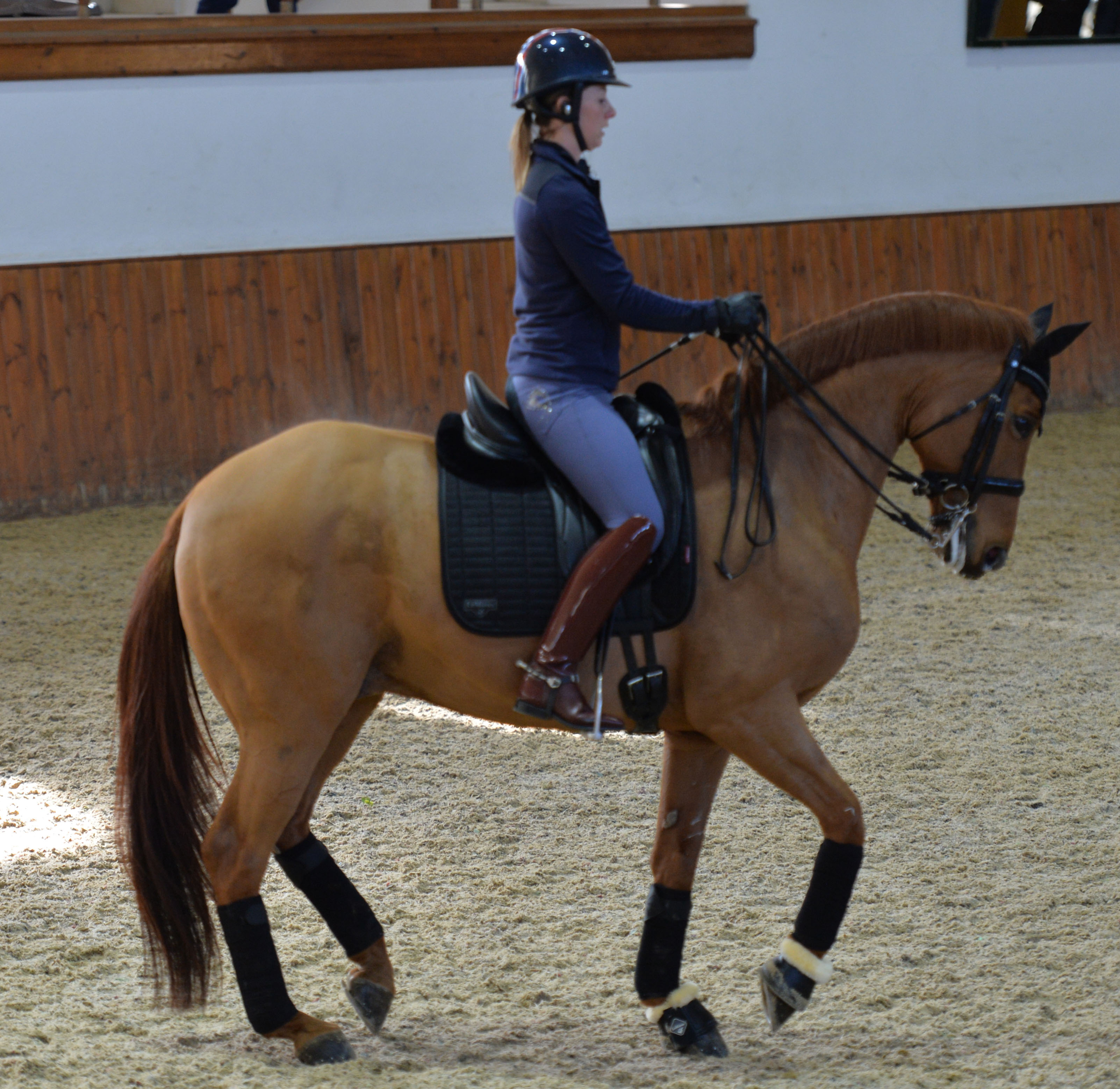 Good rider balance is important for you to be in true harmony with your horse. Modern Master Jean Bemelmans explains: “First of all I have to control myself before I can control him (the horse). If you are not in balance then you cannot ride because then you disturb the movement of the horse. You have to always be in his rhythm.”
Good rider balance is important for you to be in true harmony with your horse. Modern Master Jean Bemelmans explains: “First of all I have to control myself before I can control him (the horse). If you are not in balance then you cannot ride because then you disturb the movement of the horse. You have to always be in his rhythm.”
Udo Bürger concurs: “We must educate ourselves to acquire a good sense of balance, with our feet on the ground, before we get into a saddle. Very few humans are naturally endowed with a good sense of balance; they must achieve it by educating themselves.”
Balance training allows you to better ‘feel’ what your horse is doing under you and also more accurately assess where you are in relation to your horse, that is, your proprioception. You want your body to correctly appraise where you are in space, compared to where you need to be, and react accordingly. It will not only make you an easier load for your horse to carry, and keep you safer in the saddle, but will mean what you think you’re doing, really is what you’re doing. For example, when you think your shoulders are aligned with your horse’s shoulders, they really are.
It becomes even more important as the horse increases in collection. Steinbrecht explains: “Any body gains in circumference, the more it is shortened by compression.” Therefore, increased collection opens the horse’s ribs and therefore the rider must open his seat and legs to accommodate this expansion. The Master describes this as, “a fine aid which requires perfect balance since the rider has no support left other than his seat bones and stirrups.”
Guérinière was despairing even back in the 1700s about the tardiness of some riders. He demanded, in all movements, “exact equilibrium which comes from judicious balance of the body’s weight.”
“Given that this accomplishment has been neglected, and that nonchalance joined to a certain laxity has displaced the efforts made in the past to acquire and maintain that attractive seat which so charms the spectator and brings out the beauty of a handsome horse, it gives no cause for surprise to note that the art of horsemanship has lost a measure of its former brilliance.”
Let’s work to make Guérinière proud!
The exercises to date should already be helping with your balance which involves not only your senses such as sight and touch, but also the feedback garnered from those deep stabilising muscles we’ve been focusing on. Good balance requires good muscle usage that can react quickly to feedback, in our case from the horse and how his body is moving, so I hope you’ve been practicing your reaction exercises!
Balance can be hindered by injury or strain, which may disrupt the neural pathways and feed your brain incorrect information. Stiffness and body alignment also affects balance. Oh to be a child again! Balance comes so naturally to pliable, young bodies. As adults, we sometime try to do things by force and strength rather than balance. When you ride, it’s often helpful to ask yourself, ‘What is the least amount of muscle usage I need for the task at hand?’ Sometimes you require more, sometimes less, depending on the horse you are riding or what you are doing, but always keep it to the minimum amount necessary.
While on the horse, the best way to good balance is taking away your stirrups or getting someone to lunge you… or both at the same time. See if you can keep good balance centred in your pelvis while you pat the horse’s neck or reach around and pat his rump. Make sure your horse is trustworthy enough for the job. Steinbrecht advises that Count Denes Szechenyi even suggests playing ball in this position.
“This will certainly produce more enthusiastic and sensitive riders than will forcing them into the stiff ‘normal’ seat,” reflects Steinbrecht.
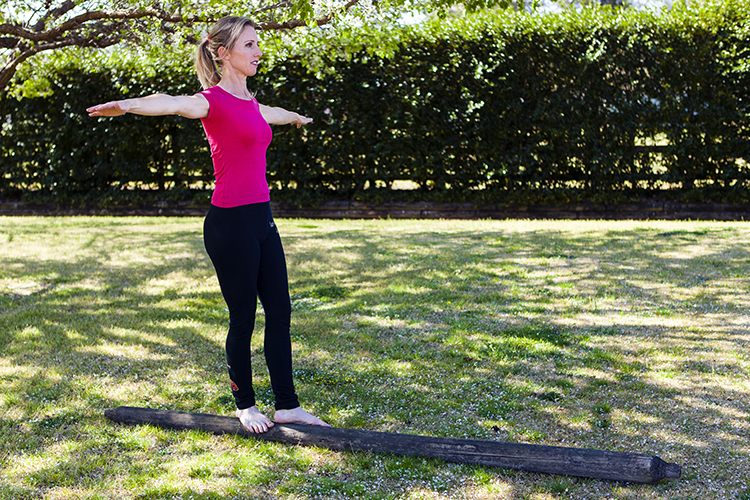
Working on balance with a ‘balance beam’
An easy way to work on balance off the horse is to grab a jump pole and use it as a balance beam. Be sure to anchor it securely before you jump onboard! See if you can walk the length of the pole or balance on each leg alternatively. You can take Udo Bürger’s suggestion and progress the exercise to jumping from one pole to the other. Feel like your balance point is in your navel and that your skin and limbs are more relaxed. You can then take this feeling into the saddle. The more you can balance in your seat bones and lower abdominals and relax your limbs, the less you will grip and hence the less your horse will grip and tense. This also allows you to give an aid and leave your horse to it rather than lock on with your legs or hands.
The less negative tension in your body, the better you can feel your horse as well. Take your awareness out of the frontal lobe of your brain and more to the centre back of your head. That way you don’t over think the process and it allows the body to sort things out for itself; it gets you out of your own way! You can test yourself further by trying to do it with your eyes closed.
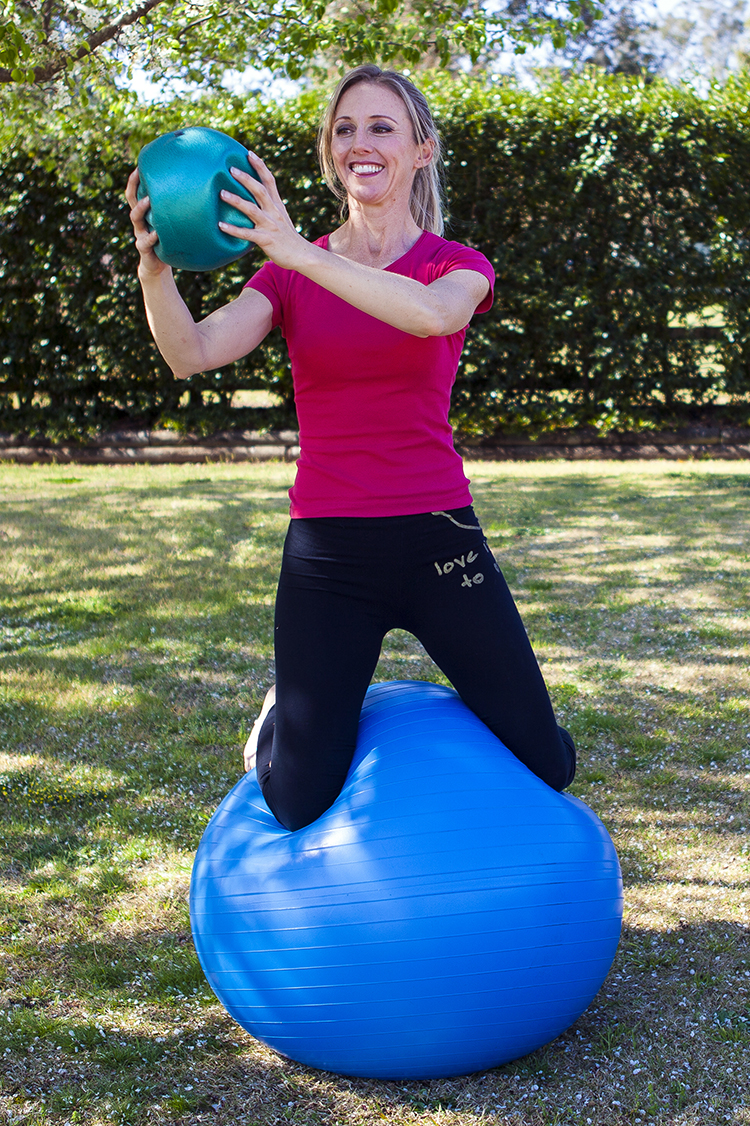
Practicing balance on a fit ball
Another fun exercise is to kneel on a big fit ball. Once you feel secure in this position, get a friend to throw a soft ball at you that you have to catch. When first attempting to kneel on a fit ball, do so on a soft surface in case the ball ‘bucks you off’. It also helps to deflate it a little. Be sure to re-inflate it though when you get the hang of it. We don’t want any cheating!
You might also try standing on a half stability ball and build up to standing on one foot and moving the opposite leg forward and back in a semi circle. Not only will your balance improve, but now you know what it must feel like for your horse to do a pirouette! Try to do it with your arms close to your side, which will direct the effort more to the centre of your body and the core to add to the experience. Your horse cannot wave around his front legs to aid his own balance, so why should you?
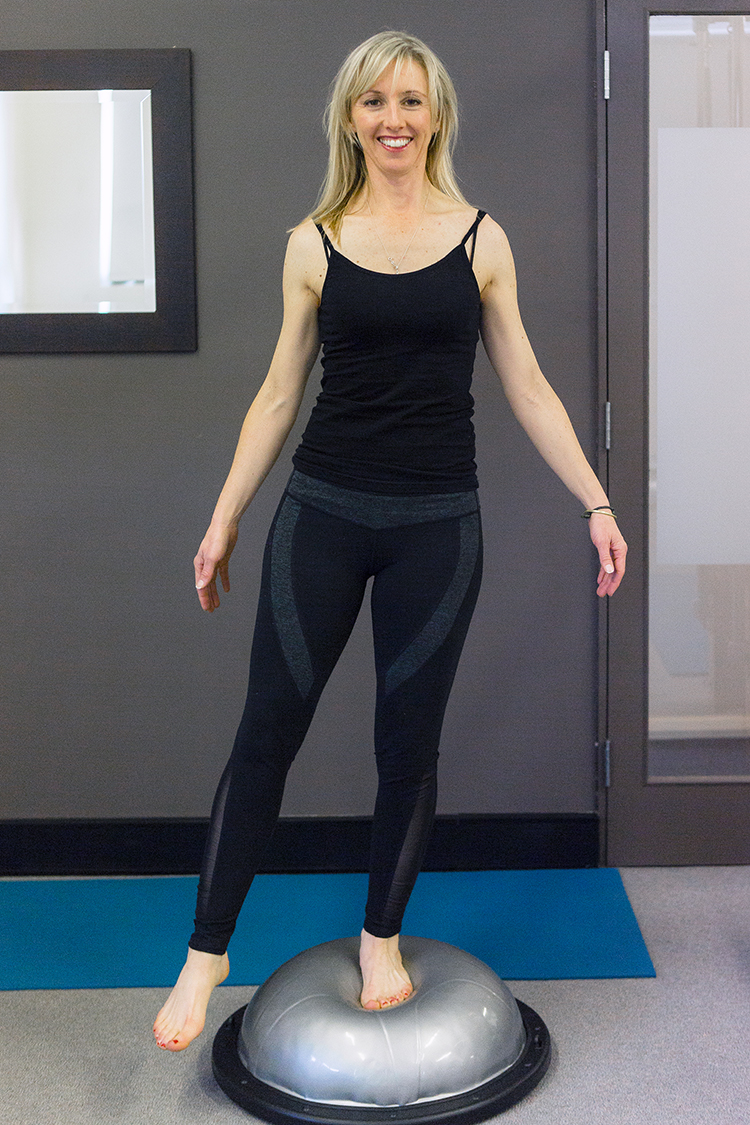
Using a half stability ball
Dressage requires the horse to be in good balance. Just think of the training required to balance on one hindleg when you are executing a canter pirouette and then put your other legs down in good rhythm and in suppleness while carrying a rider. If we require this sort of balance and precision from our horse, how can we not expect it of ourselves?
For more inspiration, Steinbrecht suggests looking at the riders of Ancient Greece at their Olympic Games, “we are enraptured by the grace and loveliness expressed in every position of rider and horse.”

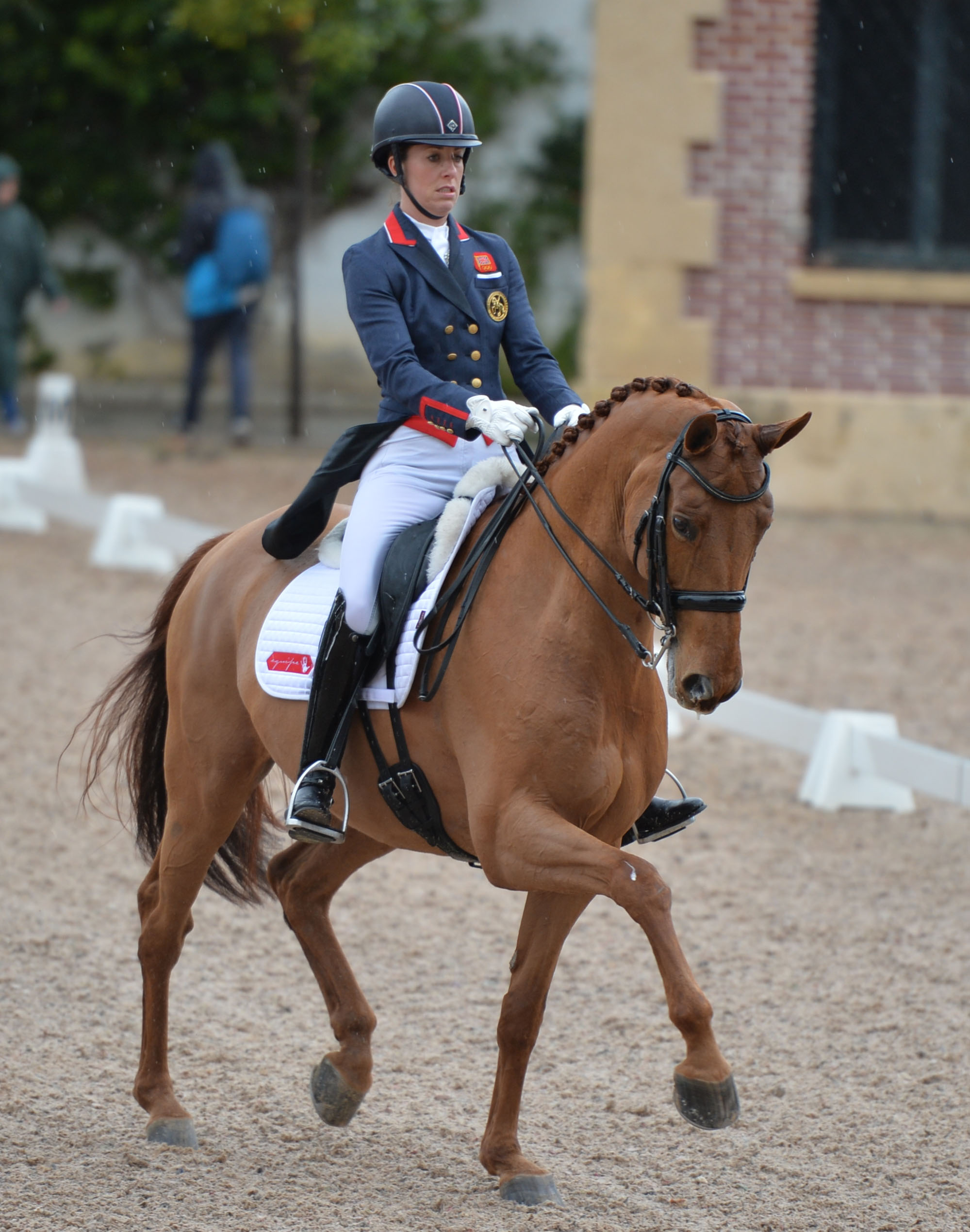
Worth studying, then practicing
The rider in the top photo does not show a deep seat, hardly any weight or contact in the saddle with her full set. Also her heels are raised, which means her leg muscles are contracted, not firm. No direct line to the horse’s mouth and he is behind the vertical.. Could you not show a more pleasing and correct example?